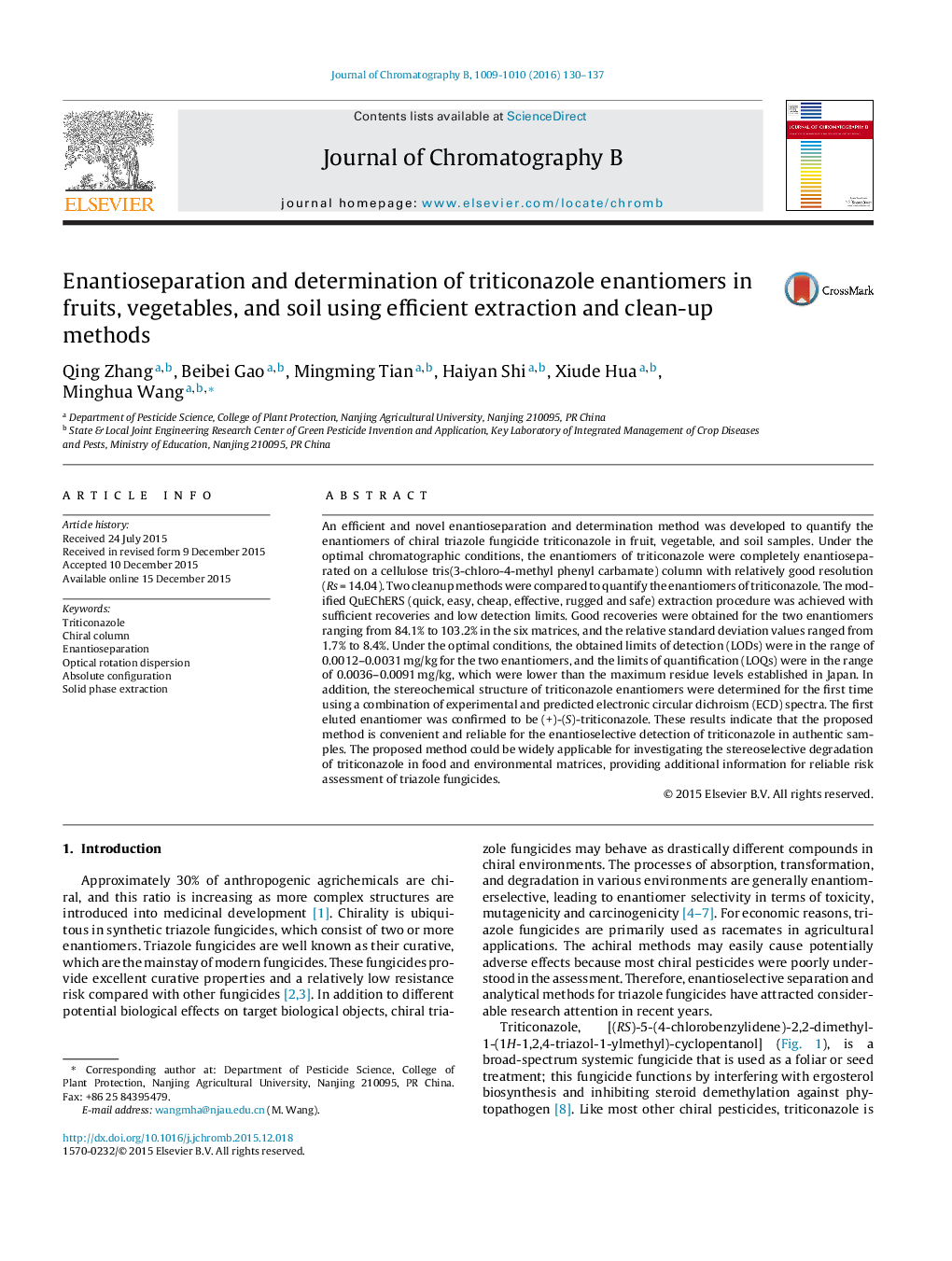| Article ID | Journal | Published Year | Pages | File Type |
|---|---|---|---|---|
| 1214744 | Journal of Chromatography B | 2016 | 8 Pages |
•Triticonazole enantiomers were satisfactorily enantioseparated on a chiral column.•A sensitive method for determining triticonazole enantiomers was developed.•The stereochemistry configurations of triticonazole were first determined.
An efficient and novel enantioseparation and determination method was developed to quantify the enantiomers of chiral triazole fungicide triticonazole in fruit, vegetable, and soil samples. Under the optimal chromatographic conditions, the enantiomers of triticonazole were completely enantioseparated on a cellulose tris(3-chloro-4-methyl phenyl carbamate) column with relatively good resolution (Rs = 14.04). Two cleanup methods were compared to quantify the enantiomers of triticonazole. The modified QuEChERS (quick, easy, cheap, effective, rugged and safe) extraction procedure was achieved with sufficient recoveries and low detection limits. Good recoveries were obtained for the two enantiomers ranging from 84.1% to 103.2% in the six matrices, and the relative standard deviation values ranged from 1.7% to 8.4%. Under the optimal conditions, the obtained limits of detection (LODs) were in the range of 0.0012–0.0031 mg/kg for the two enantiomers, and the limits of quantification (LOQs) were in the range of 0.0036–0.0091 mg/kg, which were lower than the maximum residue levels established in Japan. In addition, the stereochemical structure of triticonazole enantiomers were determined for the first time using a combination of experimental and predicted electronic circular dichroism (ECD) spectra. The first eluted enantiomer was confirmed to be (+)-(S)-triticonazole. These results indicate that the proposed method is convenient and reliable for the enantioselective detection of triticonazole in authentic samples. The proposed method could be widely applicable for investigating the stereoselective degradation of triticonazole in food and environmental matrices, providing additional information for reliable risk assessment of triazole fungicides.
